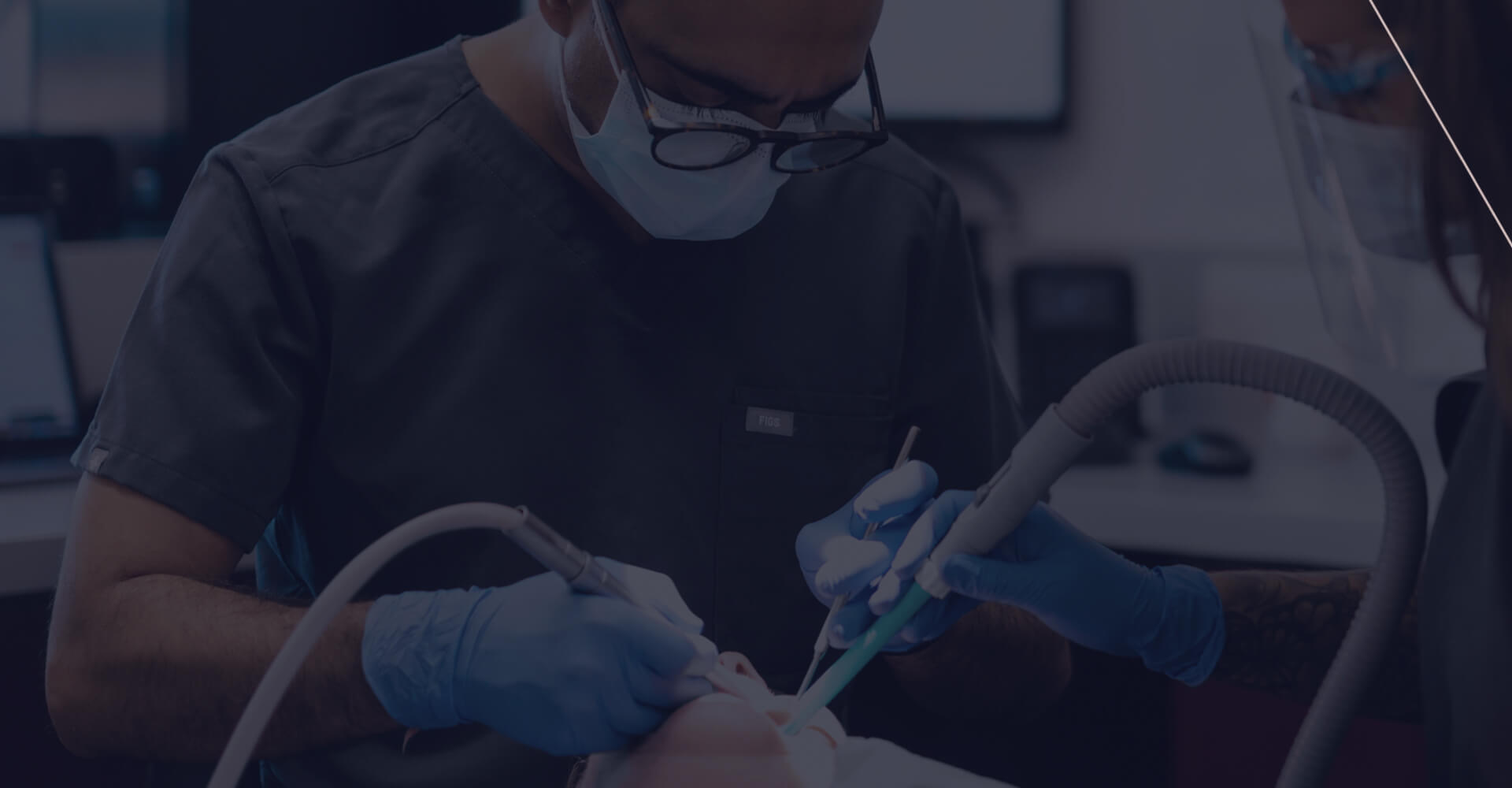
Bone Grafting
BOOK A CONSULTATIONRebuilding Your
Smile’s Support
Your jaw needs strength to ensure your dental implants are sturdy and can take the pressure of a lifetime of biting and chewing. But if you’ve lost teeth, a process called resorption occurs. When this happens, your jaw becomes weaker, and the bone deteriorates.
Without teeth, your jaw has nothing to support. Eventually, your body removes minerals, leaving your jaw thin and depleted.
But it’s not just tooth loss that can cause this. Advanced gum disease also breaks down bone, leaving your jaw too weak to support your natural teeth or dental implants.
If you need dental implants but lack the jaw bone to support them, I can perform a bone grafting or sinus lift procedure to stimulate regrowth and improve strength.

What Is a
Bone Graft?
Sometimes referred to as “bone augmentation”, a bone graft is a procedure that rebuilds depleted bone. To do this, I place a small piece of natural or artificial bone into the weakened area.
Over the next few months, the additional bone will bind to your jaw. Once the bone has healed, it can support an implant.

Bone Graft Benefits
Zygomatic implants are a fantastic option if you need several upper teeth replaced
and you’ve previously been told you can’t have implants. Here’s why.
Restore Facial Features
Depleted bone mass isn’t something that only happens behind the scenes—the effects of a deteriorated jaw are often visible from the outside. Without the support of the bone beneath it, the skin around the mouth can sag and look older.
Rebuild Lost Confidence
Failing or missing teeth can damage how you feel about your smile. A bone graft prepares your mouth for dental implants, which will give your confidence a huge boost.
Look and Feel Years Younger
The loss of facial definition and a prematurely-aged look can also harm your self-esteem. By augmenting your bone, I can help you regain your confidence and feel good about how you look again.
Eat What You Like
Difficulties eating means you can’t enjoy your favourite meals anymore. Dental implants allow you to eat what you like when you like. But I first need to perform a bone graft in jaw resorption cases. Ultimately, this procedure helps you regain control of your diet and lifestyle.
Pave the Way for Implant Surgery
Missing teeth harm your ability to eat, speak, laugh, and smile. This can wear you down, but dental implants can help. You’ll need sufficient bone density to support your implants, and a graft achieves this.

The Different Types of Bone Graft
There are several different types of bone grafts. The option used in your procedure will depend on your personal circumstances.
An autograft uses your own bone, taken from your own body. This type of graft is usually very effective, as the bone incorporates the quickest.
In some cases, I may use a biocompatible synthetic material. Here, the bone may take a little longer to fuse but still gives great results.

Sinus Lifts
A sinus lift is a specific graft to supplement bone in the upper jaw. In this procedure, I’ll carefully place the graft between your upper jaw and the sinus membrane near your back teeth. Again, the bone will fuse, allowing me to place implants in the upper jaw.

The Bone
Graft Procedure
Before performing your bone graft, I’ll first take scans of your jaw to establish bone levels. You’ll receive an anaesthetic to ensure you are comfortable throughout the procedure.
For an autograft procedure, I’ll skillfully take a small portion of bone from the other side of your mouth.
Next, I’ll place the piece of bone into position and seal up the treatment area and once completed, I’ll leave your bone to heal.
In a few months time, you jaw bone will be restored, strengthened and ready to support life-changing implants
Book Your Bone Graft Consultation
Bone grafts prepare your jaw for implant surgery. I’ve performed countless bone augmentations with
fantastic results. Call today to arrange a consultation and take steps to reverse bone resorption.